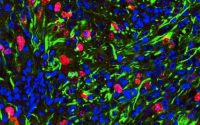Direct dispensing of prenatal supplements with iron reduces anemia

Directly providing prenatal iron supplements significantly improves average hematocrit levels throughout pregnancy and reduces anemia in underserved patients, according to a study published online Sept. 1 in JAMA Network Open.
Lisa R. Thiele, M.D., M.P.H., from the University of Texas (UT) Southwestern Medical Center in Dallas, and colleagues evaluated if providing rather than recommending supplements with iron at prenatal visits in a medically underserved community is associated with improved hematologic indices and reduced blood transfusion. The analysis included 13,910 patients who delivered between May 13 and Dec. 13, 2020, and were provided a prenatal supplement with iron throughout pregnancy or who delivered between Jan. 1 and Aug. 1, 2019, before supplements were dispensed.
The researchers found that providing iron-containing prenatal supplements was associated with higher average hematocrit levels at all time points, including a mean difference of 1.27 percent on admission for delivery versus those who were not directly dispensed iron. Among patients only recommended supplements, 18 percent had anemia on admission versus 11 percent with iron-containing supplements dispensed (risk ratio, 0.61). After program implementation, postpartum transfusion for acute blood loss anemia was cut by one-third in patients (from 10 to 6.6 per 1,000; risk ratio, 0.62).
“We can make a large impact on our patients’ health and outcomes by implementing simple interventions,” co-author Catherine Y. Spong, M.D., also from UT Southwestern Medical Center, said in a statement. “This study demonstrates the efficacy of a public health initiative to reduce maternal anemia and the most common cause of severe maternal morbidity and gives other institutions data to implement similar programs in their own populations.”
More information:
Lisa R. Thiele et al, Direct Dispensation of Prenatal Supplements With Iron and Anemia Among Pregnant People, JAMA Network Open (2023). DOI: 10.1001/jamanetworkopen.2023.32100
Journal information:
JAMA Network Open
Source: Read Full Article


